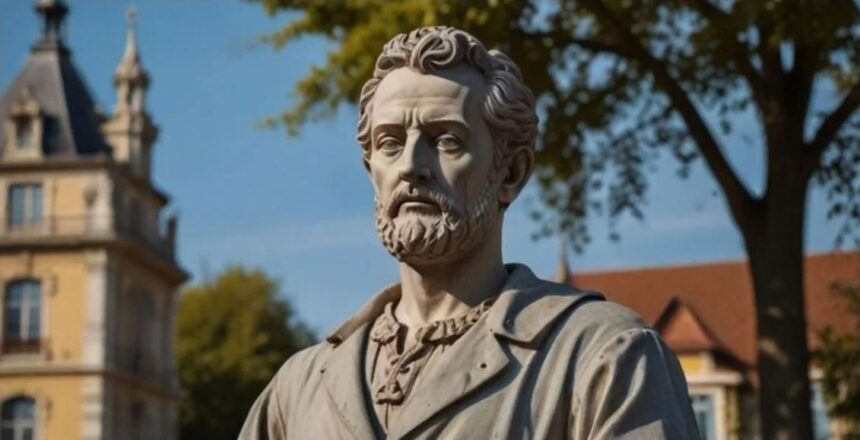Introduction to Heinrich Servias Germany
Heinrich Servias Germany stands as a captivating figure in the tapestry of Renaissance Germany. Born in 1555, this artist carved out a unique niche that blended creativity with the burgeoning ideals of humanism. As you delve into his world, you’ll discover how his early life and education shaped his artistic vision. From vibrant paintings to intricate sculptures, Servias infused emotion and intellect into every piece he created.
His work reflects not just personal expression but also an era marked by profound cultural transformation. Join us on a journey through the life and legacy of Heinrich Servias Germany, where art meets history in fascinating ways. Whether you’re an art enthusiast or simply curious about the impact of Renaissance thinkers, there’s much to explore in the story of this remarkable German artist.
Early Life and Education of Heinrich Servias Germany
Heinrich Servias Germany was born in a vibrant era marked by cultural transformation. His early life unfolded against the backdrop of Renaissance Germany, where art and intellect flourished.
Servias grew up in a modest family, which encouraged his curiosity about the world around him. This nurturing environment shaped his artistic sensibilities from a young age.
His education began at local institutions, where he immersed himself in classical texts and philosophical ideas. The influence of renowned thinkers sparked a deep interest in humanism within him.
As he matured, Servias sought formal training under accomplished artists. These mentors guided him through various techniques that would later define his unique style.
Each step of his educational journey contributed to the remarkable artist he became. The foundation laid during these formative years echoes throughout his works even today.
Servias’ Artistic Style and Techniques
Heinrich Servias Germany’ artistic style is a fascinating blend of precision and emotion. His mastery of detail sets his work apart, captivating viewers with lifelike representations.
Utilizing oil paints allowed him to achieve depth and richness in color. This technique enhanced the vibrancy of his subjects, drawing attention to intricate patterns and textures.
Servias often employed chiaroscuro to create dramatic contrasts between light and shadow. This method added a three-dimensional quality that made figures appear more dynamic.
Influenced by classical themes, he incorporated mythological elements into many compositions. Each piece tells a story, inviting contemplation and connection with the viewer.
His brushwork showcases fluidity yet remains meticulous. This duality reflects both spontaneity and careful planning, illustrating his unique approach within Renaissance Germany’s artistic landscape.
The Influence of Renaissance Humanism on Servias’ Work
Renaissance Humanism played a pivotal role in shaping the artistic vision of Heinrich Servias Germany. This movement emphasized the importance of individual experience and classical knowledge, which resonated deeply with his creative ethos.
Servias embraced themes from ancient Greece and Rome. His works often reflect ideals such as beauty, proportion, and harmony. This infusion of classical elements set his art apart during an era rich in innovation.
Moreover, humanist principles encouraged artists to explore human emotions and experiences more profoundly. As a result, Servias’ pieces evoke a sense of intimacy and connection that transcends mere representation.
His keen interest in literature also influenced his artistry. By intertwining poetry with visual expression, he created multi-dimensional narratives that engaged viewers on different levels.
Humanism not only informed Servias’ subjects but also inspired him to experiment with new techniques, enriching the canvas with depth and texture unique to his style.
Major Works by Heinrich Servias Germany
Heinrich Servias Germany produced several remarkable works that resonate with the spirit of his time. One of his most celebrated pieces is “The Triumph of Virtue,” a stunning representation that encapsulates the ideals of Renaissance humanism.
Another noteworthy creation is “Portrait of a Young Nobleman.” This painting showcases not only Servias’ mastery in capturing character but also his skillful use of light and shadow, bringing depth to the subject’s personality.
His series on biblical themes also stands out, reflecting both religious devotion and an innovative approach to storytelling through art. Each scene invites viewers into a world where divine narratives come alive.
Servias’ work extended beyond traditional mediums as well. His contributions to architecture, particularly in church restorations, demonstrate how he integrated artistic vision into structural design. These major works collectively highlight Heinrich Servias Germany’ pivotal role in shaping German Renaissance art and thought.
Legacy and Impact on the Renaissance Movement in Germany
Heinrich Servias Germany played a crucial role in shaping the landscape of Renaissance art in Germany. His innovative techniques and vibrant use of color caught the attention of many contemporaries. Artists began to adopt his methods, which blended realism with an emotional depth that was previously rare.
His works inspired generations, encouraging them to explore humanistic themes and individuality. This shift marked a significant transition away from medieval conventions toward a more expressive artistic freedom.
Servias also contributed to architectural design, emphasizing symmetry and proportion—key principles rooted in classical antiquity. These ideas resonated throughout German states, influencing not only painters but architects as well.
The enduring nature of his impact is evident today through institutions dedicated to preserving his legacy. They celebrate how he bridged cultural movements and helped lay the groundwork for future artists seeking their own voices within the ever-evolving tapestry of Renaissance thought.
Conclusion: Heinrich Servias Germany
Heinrich Servias Germany stands as a pivotal figure in the tapestry of Renaissance Germany. His works resonate with the spirit of innovation and creativity that defined this vibrant era.
As an artist, he merged classical influences with local traditions, creating pieces that were both timeless and relevant. The interplay between his style and humanist ideals opened new avenues for artistic expression.
His legacy continues to inspire contemporary artists. They draw from his techniques while exploring their own narratives.
In studying Servias, one uncovers more than just art; it’s an exploration of culture, philosophy, and identity during a transformative period in history. His contributions remain embedded in the fabric of German heritage.
FAQs
Heinrich Servias Germany remains a pivotal figure in the landscape of Renaissance art. His unique blend of artistry and humanistic themes has shaped not only his era but also subsequent generations of artists.
As we explore some frequently asked questions, it becomes clear just how significant his contributions have been.
What influenced Heinrich Servias Germany’ artistic style?
Servias was deeply inspired by the principles of Renaissance humanism. This movement emphasized individual potential and creativity, which he seamlessly wove into his artwork.
Which major works are attributed to Heinrich Servias Germany?
Some notable pieces include “The Portrait of Count Johann” and “Allegorical Figures,” both showcasing his innovative techniques and profound understanding of human emotion.
Did Heinrich Servias Germany participate in any specific art movements?
While primarily associated with the Renaissance, Servias’ work often bridged various styles, influencing later movements like Baroque through its dramatic use of light and shadow.
How did servant culture impact his works?
Servian culture provided a rich backdrop for exploration within art. Themes surrounding daily life were prevalent in much of his work, reflecting societal values during that period.
Is there a museum dedicated to Heinrich Servias Germany’ works?
Although no specific museum solely focuses on him, many galleries worldwide showcase pieces from this magnificent era that highlight servius’s influence alongside other renaissance masters.
Heinrich Servias Germany continues to be celebrated for revolutionizing the way we perceive artistry through emotional depth intertwined with technical prowess. His legacy undoubtedly endures as an essential part of our cultural heritage.

















